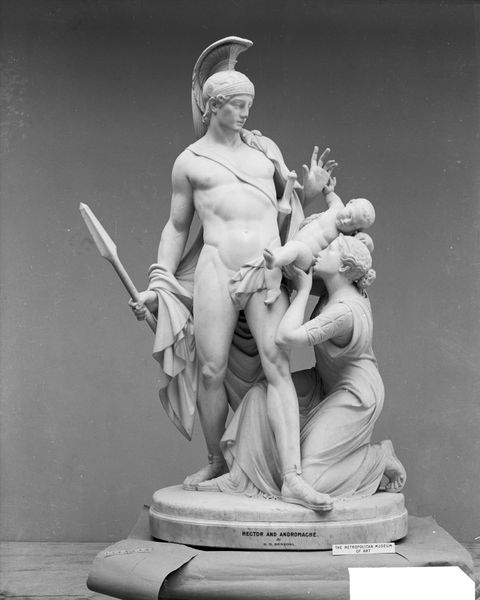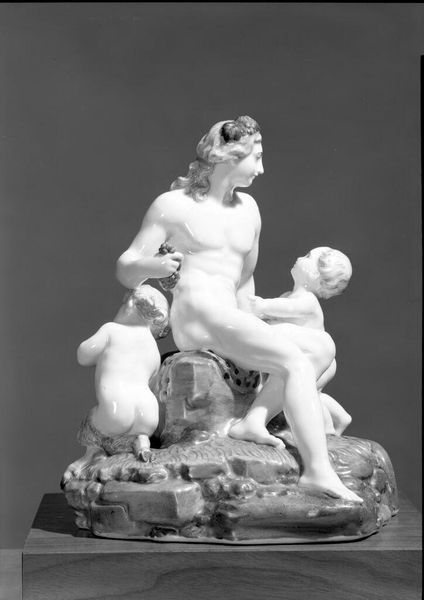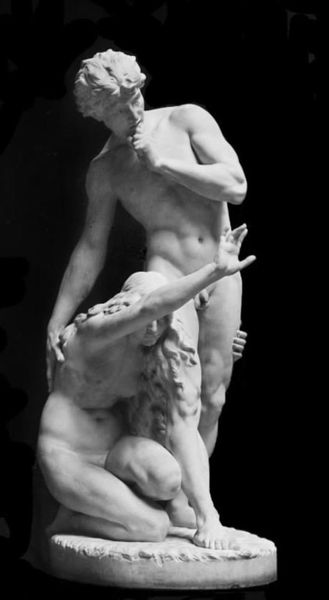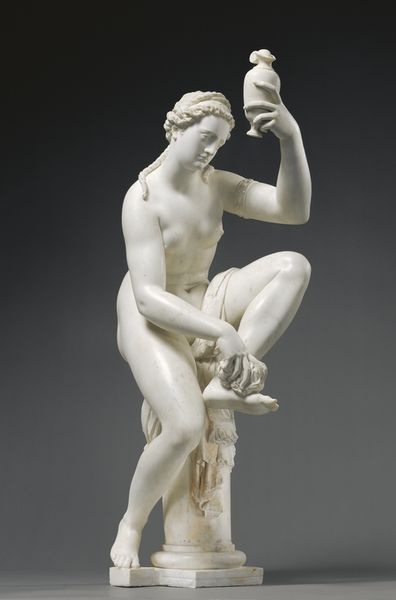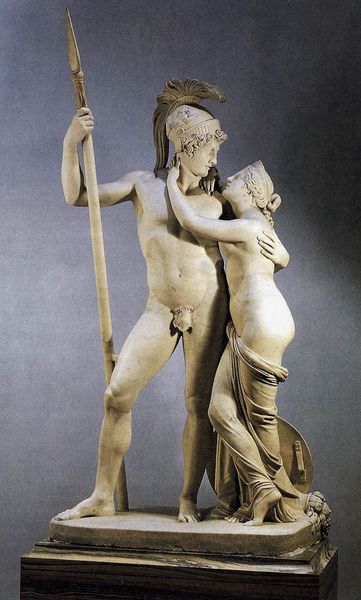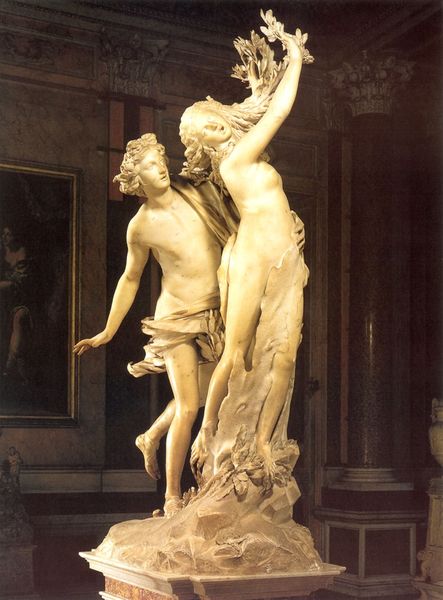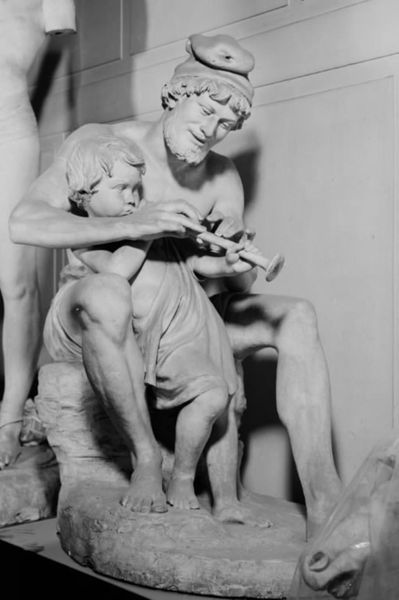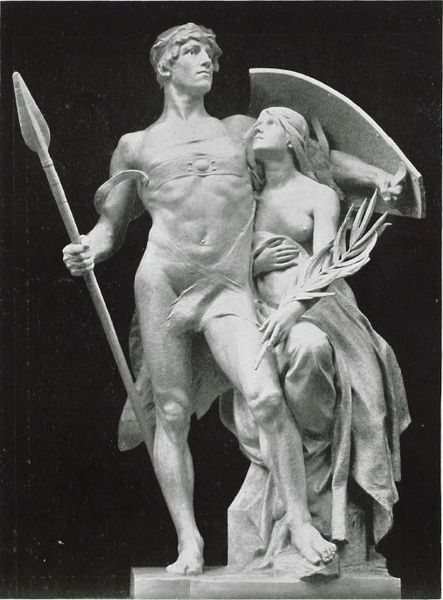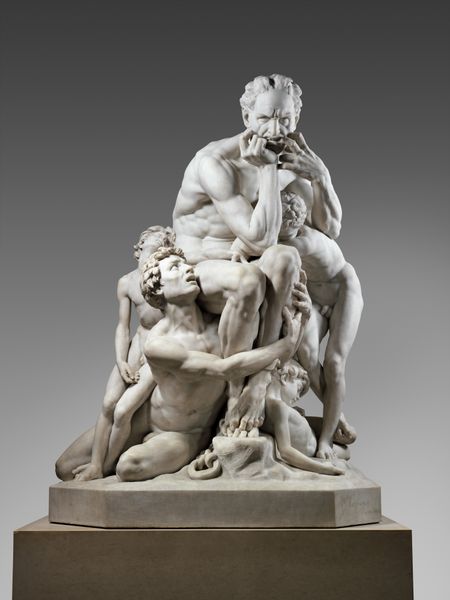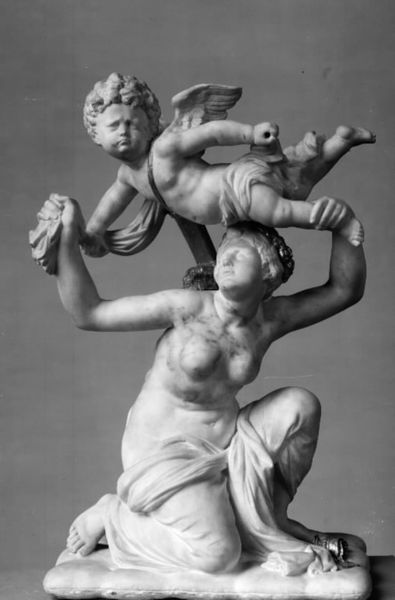
Vertumnus, Pomona og Amor. Vertumnus viser sig for Pomona i sin sande skikkelse, idet hun tager masken fra ansigtet 1747 - 1751
0:00
0:00
Dimensions: 82 cm (height) x 77.5 cm (width) x 53.5 cm (depth) (Netto)
Curator: Here we have "Vertumnus, Pomona og Amor. Vertumnus viser sig for Pomona i sin sande skikkelse, idet hun tager masken fra ansigtet", crafted from marble between 1747 and 1751 by S.C. Stanley. The work is currently held at the SMK, the National Gallery of Denmark. Editor: Immediately, I am struck by the cool sensuality radiating from this sculpture. The figures, though classical, feel caught in a private, intensely personal moment. Curator: Yes, Stanley is working within the Neoclassical style here, very popular at that time, revisiting classical myths and allegories. This particular piece illustrates a scene from Ovid's Metamorphoses. Vertumnus, the god of seasons and change, reveals his true form to Pomona, a wood nymph devoted to her orchard. The mask and unmasking motif is rich in psychological undertones. Editor: Absolutely, the act of unveiling transcends the literal. I think this work engages in early modern ideas of representation and reality. The sculpture reveals the dynamics of power inherent in disguise and exposure. What narratives are privileged, and which are deliberately obscured? The mask suggests something about performativity. Curator: Indeed, masks were often employed as powerful cultural signifiers. They can conceal, transform, or reveal the wearer’s true identity and intention, depending on the symbolic context. By removing his mask, Vertumnus sheds artifice and presents his authentic self to Pomona, which emphasizes the beauty and necessity of honesty and vulnerability. And there’s even an infant figure – Amor, or Cupid – included, nudging things along! Editor: This makes me wonder, then, about what’s missing in this marble vision of the original narrative. Whose stories don't make it into these supposedly eternal renditions? In that historical context, with limited gender expression and rigid roles for women in Danish society, what were the cultural boundaries that Stanley simultaneously enforced and subverted? Curator: A crucial line of inquiry. And as an image, Stanley’s creation offers continuity through time, revealing universal emotions through recognizable symbols that tap into the cultural memory of European ideals about love, honesty, and beauty. Editor: An aesthetic rendering of power, desire, and transformation… a lens through which we can begin to question who is doing the seeing, and whose stories get told, across generations.
Comments
No comments
Be the first to comment and join the conversation on the ultimate creative platform.

